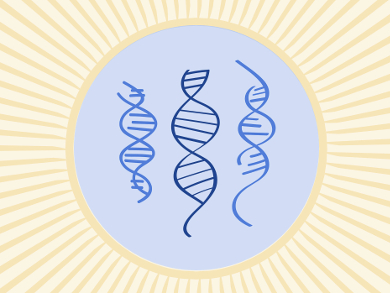Insight into the mechanism of photoinduced DNA damage could help to understand disease caused by light damage, and further the development of photodynamic therapies. If DNA is bound to a photosynthesizer, the damage often occurs via one-electron photooxidation of guanine, one of the nucleobases. In the living cell, this fast process is very dufficult to observe.
Christine J. Cardin, University of Reading, UK, John M. Kelly, University of Dublin, Ireland, Susan J. Quinn, University College Dublin, Ireland, and colleagues have applied ultrafast time-resolved infrared spectroscopy (TRIR) to this problem. Instead of a solution, the researchers looked at DNA crystals, whose structure was determined using X-ray crystallography. The DNA was bound to a ruthenium polypyridyl photosensitizer.
The spectroscopic data allowed the team to elucidate the individual steps of the reaction mechanism and the dynamics of the reversible photoinduced redox reaction. The researchers hope that this work will improve the understanding of DNA damage and allow the development of new light-activated drugs against cancer.
- Monitoring one-electron photo-oxidation of guanine in DNA crystals using ultrafast infrared spectroscopy,
James P. Hall, Fergus E. Poynton, Páraic M. Keane, Sarah P. Gurung, John A. Brazier, David J. Cardin, Graeme Winter, Thorfinnur Gunnlaugsson, Igor V. Sazanovich, Michael Towrie, Christine J. Cardin, John M. Kelly, Susan J. Quinn,
Nat. Chem. 2015.
DOI: 10.1038/nchem.2369




